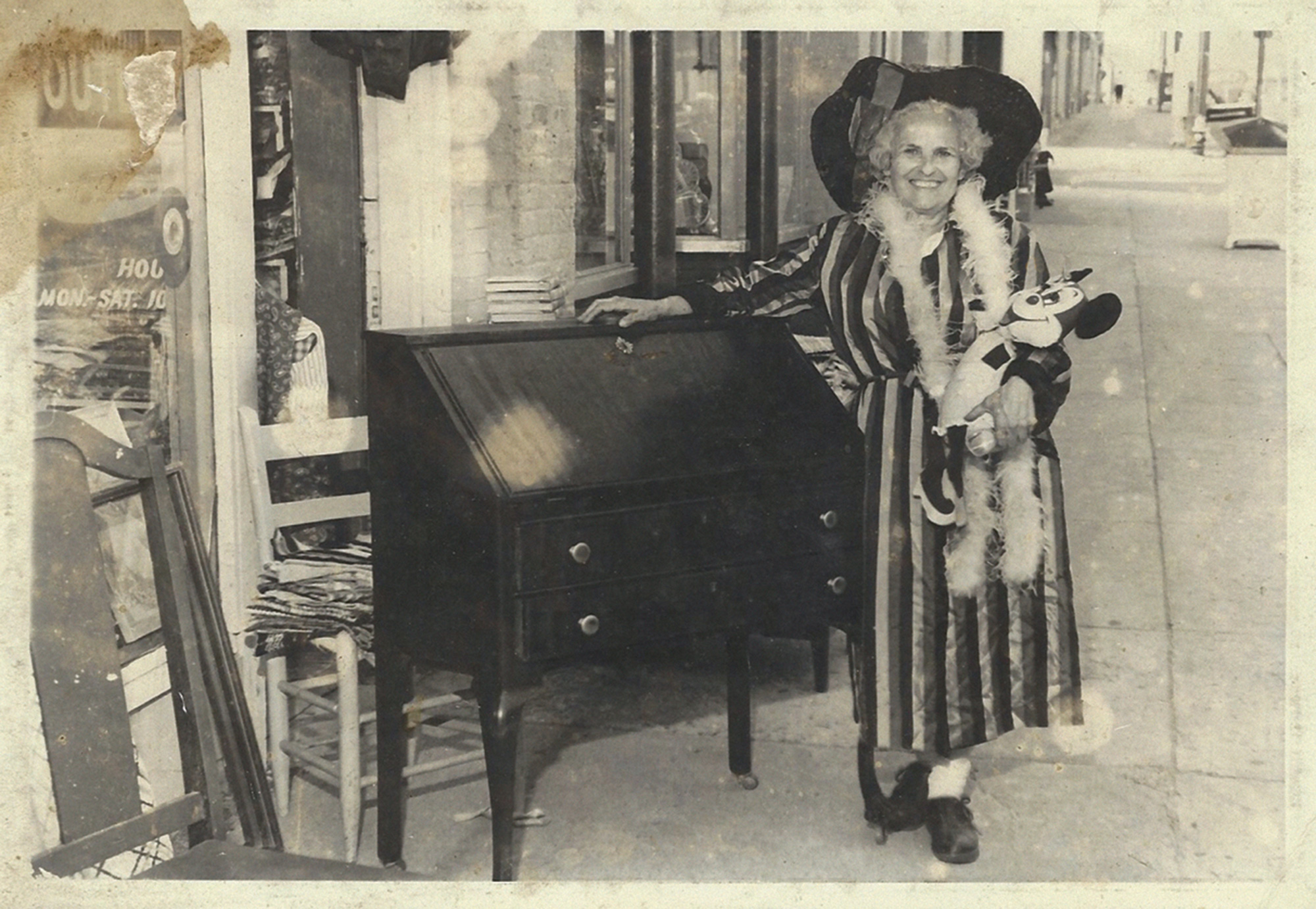Leftovers / Surplus Meaning
Grandma Gray and the postwar American economy
George Scheer and Stephanie Sherman
“Leftovers” is a column that investigates the cultural significance of detritus.

By 2003, downtown Greensboro, North Carolina, was so sleepy that on Sundays you could play tennis in the middle of the street. The turn-of-the-century buildings—three stories high in short blocks along Elm Street, the main drag—were mostly vacant. During the weekdays, however, there was still some activity. Mr. Kindley took orders from his desk at his office furniture showroom. Bill at Coe’s Grocery and Seed sold tomato plants, Cheerwine soda, 40s, and cigarettes for under three dollars. Every morning at 6:30 on the dot, Jack Wagner picked up a copy of the News and Record from the box on the corner. Around 10:30, Ralph and his son Mike dragged their used appliances onto the street corner. Blumenthal’s neon signs still advertised an old deal: a chance to win a free pack of cigarettes with the purchase of work wear. Occasionally around noon, a truck pulled up to deliver a piano to John Foy’s shop for repair. By 5:30, the owners of the antique stores and picture galleries were on their way home, and Juanita at Deal Printing was closing up her offices. People shuttling to and from the nearby Urban Ministries shelter in the late evening kept an eye on the otherwise empty streets.
It wasn’t always this way. In 1939—the year that a tornado touched down on the 600 block—Sylvia and Joe Gray bought a three-story building at 606 South Elm Street in the heart of a bustling downtown. Joe was a playful New Yorker who took up the family business, driving his father on sales excursions between New York and Raleigh. Realizing delivery trucks full of new North Carolina furniture were returning from New York empty, Joe began buying up repossessed furniture and shipping it to North Carolina for repair and resale. That’s how Joe had ended up resettling his father, mother, and brother Mel in the South, where he met Sylvia, a Southern Jewish beauty from Mt. Airy, North Carolina. The two courted, married, and their love took shape through their surplus store, the Carolina Sales Company. At first, they sold furniture, and later work wear and Army-Navy surplus, on the first floor; they kept a boarding house on the second, and, for a short time, lived on the third beside the business office and repair shop. They worked as a team. He played the front man, corresponding with customers, merchants, wholesalers, and dealers. She kept to the margins—managing the books, inventories, and accounts of shipping costs, CODs, lot payments, and sales contracts. His name was signed to every invoice; her chicken scratch covered the surface of every receipt.